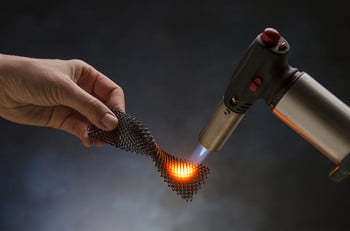Ceramic materials are ideal for a wide range of applications from jet engine components to intricate microelectromechanical parts.
Unfortunately, because they cannot be cast or machined easily, ceramic parts are generally more difficult to process compared to polymers or metals.
However, a new approach for producing ceramics using additive manufacturing overcomes the traditional limitations on ceramic processing.
Ceramic parts are traditionally consolidated from powders by sintering. This inevitably leaves residual porosity in the parts, limiting their strength as well as their range of achievable final shapes.
The new approach utilizes a preceramic monomer resin which can be 3D-printed into parts of virtually any shape or size. Using a laser to raster the geometry of a part in the resin cures that portion of the resin into a polymer. Once cured, the resin is then fired to yield the final product: a high-strength, fully dense ceramic part.
No significant shrinkage has been observed as a result of the firing process and once fired, the parts show exceptional thermal stability.
A silicon oxycarbide microlattice fabricated using this process exhibited ten times the strength of similar ceramic materials. It can also withstand temperatures in excess of 1700°C (3092°F).
“With our new 3D printing process, we can take full advantage of the many desirable properties of this silicon oxycarbide ceramic, including high hardness, strength and temperature capability as well as resistance to abrasion and corrosion,” said Dr. Tobias Schaedler, program manager at HRL Laboratories.
Check out the video below to see just how tough these 3D-printed ceramics are:
Read more at ENGINEERING.com


